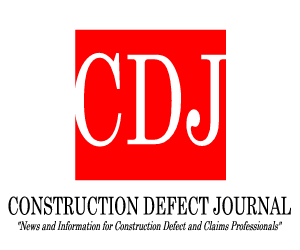
A summary of important environmental decisions issued by courts last month.
Besides showers, this April brought a number of notable new environmental decisions issued by the federal courts. Before your mind turns to May and its flowers, here’s a summary:
1. DC Circuit. On April 23, 2019, the U.S. Court of Appeals for the DC Circuit decided the case of State of New York, et al. v. EPA. In the Clean Air Act amendments of 1990, the Congress established the Northeast Ozone Transport Region, composed of the states of Connecticut, Delaware, Maine, Maryland, Massachusetts, New Hampshire, New Jersey, New York, Pennsylvania, Rhode Island, Vermont, the District of Columbia and a portion of Virginia. Recently, several of these states requested EPA to expand this region to include the “upwind states” of Illinois, Indiana, Kentucky, Michigan, North Carolina, Ohio, Tennessee, West Virginia, and the remaining portions of Virginia. Doing so would assist the “downwind” states in complying with EPA’s 2008 Ozone standard. EPA rejected this request, which was then appealed to the DC Circuit by the states of Connecticut, Delaware, Maryland, Massachusetts, New York, Pennsylvania, Rhode Island and Vermont. Because of its unique properties, ozone created by emissions in the upwind states can be transported to the downwind states, thus allegedly hampering their ability to cope with EPA ozone standards. The court agreed that EPA has the authority to expand the Northeast Transport Ozone Transport Region, but it also has the ability to exercise its reasonable discretion not to do so. In addition, the agency’s decision to rely instead on the remedies available to it in in the Clean Air Act’s “Good Neighbor” provision was reasonable and adequately justified, and the court accordingly upheld the agency’s decision. The court also noted that other remedies may be available to the downwind states, just not this one.
2. DC Circuit. The Court also decided on April 23, 2019 the case of Air Transport Association of America v. Federal Aviation Administration. The FAA held that the payments made by the City of Portland’s airport’s utility city charges for offsite stormwater drainage and Superfund remediation was not an “impermissible diversion” of airport revenues or in violation of the “Anti-Head Tax Act,” which is codified at 49 USC Section 40116(b) and which prohibits collecting a tax on persons travelling in air commerce. Here, the charges are assessed against the airport for the use by the airport of the city’s water and sewage services. The Superfund assessment is based on the fact that the Willamette River which runs through downtown Portland could make the city a Superfund potentially responsible party, and the cty is assessing all rate payers—including the airport—a Superfund assessment. The airport is federally funded and is owned and operated by the Port of Portland, and the Port pays a combined sewer, stormwater /water bill with multiple line items including these contested items. The court notes that federal law, in particular 49 USC Section 47107(k)(2), authorizes airport revenues to be used for the operating costs of the airport receiving federal funding, and the FAA could reasonably determine that these general expenses are authorized airport “operating costs” even though the city services are provided outside the boundaries of the airport.
Mr. Cavender may be contacted at anthony.cavender@pillsburylaw.com




